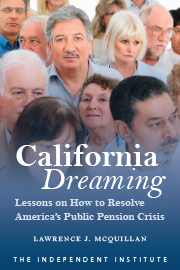The Association of Bay Area Governments and the Metropolitan Transportation Commission have approved Plan Bay Area, a master plan for housing, transportation and land use in the San Francisco Bay Area through 2040. The goals of “smart growth” and “sustainable communities” sound noble, but the plan will disproportionately harm the region’s poor and minorities. A lawsuit seeks to halt implementation.
Plan Bay Area creates Priority Development Areas throughout the nine counties and 101 cities that are members of ABAG. Eighty percent of the new housing needed in the Bay Area over the next 28 years, as its population grows from 7 million to 9 million, will occur in these areas. The largest are in North and Central San Jose; parts of Alum Rock; Redwood City near Highway 101; the eastern third of San Francisco; and the western Oakland/Emeryville area—neighborhoods with disproportionate populations of minorities, poor and seniors, according to census data.
Under Plan Bay Area, high-density housing will get the green light for building permits by regional planners and city and county officials in these areas. The plan is not a vision statement but literally the road map for housing development through 2040. MTC can withhold some transportation funding if local governments don’t abide by the plan, and private groups can sue local governments over housing allotments.
As development occurs in these poorer neighborhoods, land prices and rents will increase, pushing out tens of thousands of poor and elderly residents. Plan Bay Area officials acknowledge this gentrification effect but contend their goals for regional housing production will provide another place in the Bay Area for displaced families to land. But history teaches the only housing goal met in the Bay Area is for upper-income households. The most vulnerable people will become outcasts.
All of Plan Bay Area’s development areas are confined to less than 5 percent of the land and clustered near mass transit such as BART, Caltrain and VTA. The plan is uncreative in design and use of transportation money.
It will deploy a transportation budget of $292 billion, but only 12 percent will fund new capacity. The plan will “stack and pack” people in “transit villages” along already overcrowded transit corridors. In this respect, Plan Bay Area is no different from other “sustainable communities” projects around the world.
These projects share basic features first outlined in the United Nations’ Agenda 21 agreement: Build “human settlements” consisting of high-density residential housing integrated with high-intensity commercial businesses (“mixed use”) along mass transit lines surrounded by “open space” off limits to development.
Plan Bay Area conforms to this vision. Roughly 75 percent of the land in the Bay Area is already off limits to development, but the plan will jam more people into a smaller area by further restricting land use through “Priority Conservation Areas”. This is an elitist, uncreative and heavy-handed approach. Many progressives fought for a more decentralized approach that would have distributed growth more evenly across the region. Unfortunately, they lost.
A group called Bay Area Citizens has filed a lawsuit contending, among other things, planners ignored alternatives that would let people choose for themselves how and where they live. The opening brief is expected in December. The court should invalidate Plan Bay Area.









